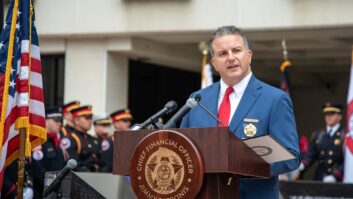WASHINGTON — Driven by an explicit desire to speed 5G and close the digital divide, the FCC has released a draft proposal to free up mid-band (C-band) spectrum (3.7-4.2 GHz) for wireless broadband — and perhaps eve auction it all to the highest and best user — a draft it plans to vote on at the July 12 public meeting.
The C-band is currently used to deliver cable and broadcast network programming to thousands of stations and cable systems.
Broadcast and cable trade associations have cautioned the FCC to slow down a bit and consider the impact of sharing the band on what is essentially the distribution backbone for their respective video services. Both want the FCC to consider whether the band can be shared at all given the potential for interference, particularly if the FCC wants dynamic sharing.
But the draft clearly signals the FCC wants those broadcast and cable operators to share that band, though that comes in a mixture of “asks” and “Seeks” and “invites” (see below) that leave room for tweaking.
The FCC fact sheet on the item identifies it as a way of “quickly making more mid-band spectrum available for terrestrial fixed and mobile broadband, and transitioning “all or some of the band” to that purpose.
And in a bit of deja vu–hearkening to the days when broadcasters some of their spectrum needed to be auctioned in the interests of finding the “highest and best use” value of that spectrum– the commission is at least asking for input on auctioning the entire band, or what it calls “whether to transition all or part of the band through a market-based mechanism, auction mechanisms, or alternative mechanisms.
NCTA-The Internet and Television Association had no immediate comment, but is likely to seek some changes in the draft, which the FCC concedes is a work in progress.
“Virtually every television viewer and radio listener depend on C-band spectrum for reliable content distribution,” said the National Association of Broadcasters in a statement. “Proposals to allow expanded operations in this band raise significant concerns as to how that content distribution architecture can be protected and accommodated. We look forward to working with the FCC and other stakeholders to address these challenges through this proceeding.”
FCC chairman Ajit Pai has made boosting rural broadband a priority. To that end, the NPRM proposes to make 160 MHz of spectrum available for fixed wireless broadband on a primary licensed–though shared–basis.
Among the elements the FCC tees up for comment in its Notice of Proposed Rulemaking, according to the commission:
- “Requests input on how to properly define different classes of incumbents and on steps regarding the future of incumbents, including appropriate protections for existing satellite operators [which comprises the cable and broadcast users of satellite spectrum to deliver their programming to stations and headends] and potentially sunsetting or grandfathering the existing fixed microwave point-to-point licenses in the band.
- “Asks whether the Commission should amend its rules to codify temporary freezes the Bureaus have placed on certain applications for satellite licenses and registrations.
- “Proposes to expand terrestrial use of the band.
- “Proposes to add a mobile allocation to the 3.7-4.2 GHz band.
- “Seeks comment on various proposals for expanding flexible use in the band, including whether to transition all or part of the band through a market-based mechanism, auction mechanisms, or alternative mechanisms.
- “Seeks comment on potentially allowing point-to-multipoint use on a shared basis in a portion of the band.
- “Invites feedback on what service and technical rules should be changed or adopted if the Commission decides to expand flexible use or allow point-to-multipoint use in the band.”
Broadcasters and cable operators say that if the FCC does decide the band can be shared, after sufficient study, it should reserve specific spectrum for both current satellite and future broadband uses, with guard bands to guard against interference.
“The draft NPRM is a very positive first step in leveraging this underutilized spectrum as infrastructure to narrow the rural broadband gap,” said Michael Calabrese director of the Wireless Future Project at the New America Foundation’s Open Technology Institute. “The Chairman is wisely seeking a balanced policy that opens unused capacity across the entire 500 megahertz for both fixed and mobile wireless operators, while not disrupting its current use for video distribution. Opening at least the top portion of the band for high-capacity fixed wireless can boost rural broadband almost immediately, whereas mobile use of even the bottom 100 megahertz will take years.”












